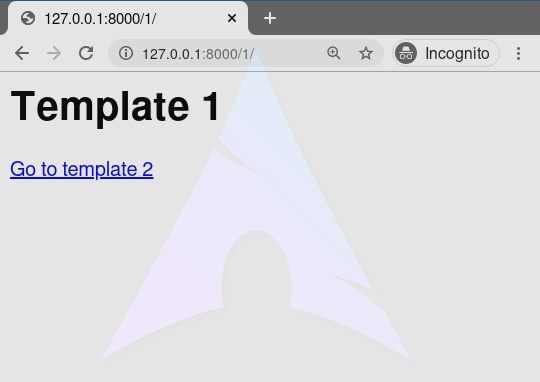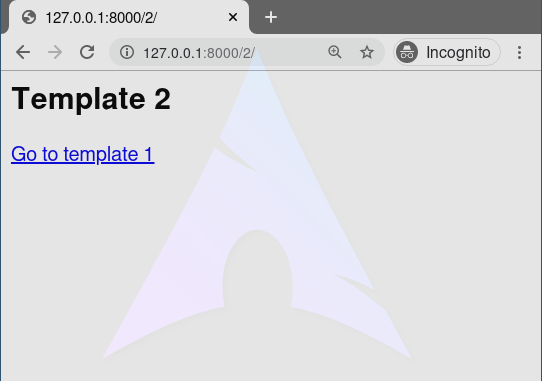How To Load A Template Tag
url – Django Template Tag
A Django template is a text document or a Python string marked-up using the Django template linguistic communication. Django beingness a powerful Batteries included framework provides convenience to rendering data in a template. Django templates non only permit passing data from view to template, simply also provides some limited features of programming such as variables, for loops, comments, extends, url, etc.
This article revolves about how to use url tag in Templates. url tag Returns an absolute path reference (a URL without the domain name) matching a given view and optional parameters. This is a way to output links without violating the DRY principle by having to hard-code URLs in your templates:
Syntax
{% url 'some-url-proper noun' v1 v2 %} The kickoff argument is a URL pattern proper noun. It tin can exist a quoted literal or any other context variable. Additional arguments are optional and should be space-separated values that will exist used as arguments in the URL.
Example
{% url 'template1' %} url – Django template Tags Explanation
Illustration of How to apply url tag in Django templates using an Example. Consider a project named geeksforgeeks having an app named geeks.
Refer to the following articles to check how to create a project and an app in Django.
- How to Create a Basic Projection using MVT in Django?
- How to Create an App in Django ?
Now create two views through which we will access the template,
In geeks/views.py,
from django.shortcuts import return
def geeks_view(request):
return return(request, "geeks.html" )
def nav_view(request):
return render(asking, "nav.html" )
Create a url path to map to this view. URLs need to have a proper name which so can be used in templates and with url tag. In geeks/urls.py,
from django.urls import path
from .views import geeks_view, nav_view
urlpatterns = [
path( '1/' , geeks_view, name = "template1" ),
path( '2/' , nav_view, proper name = "template2" ),
]
Now we will create two templates to demonstrate now tag. Create a template in geeks.html,
< html >
< h1 >Template 1</ h1 >
< a href = "{% url 'template2' %}" >Go to template 2</ a >
</ html >
Create a template in geeks.html,
< html >
<< h2 >Template 2</ h2 >
< a href = "{% url 'template1' %}" >Go to template 1</ a >
</ html >
Now visit http://127.0.0.1:8000/1,

Click on the link and it will redirect to other url.

Advanced Usage
suppose you have a view, app_views.customer, whose URLconf takes a client ID (here, client() is a method inside the views file app_views.py). The URLconf line might expect like this:
path('client/<int:id>/', app_views.client, proper name='app-views-client') If this app'due south URLconf is included into the projection's URLconf under a path such as this:
path('clients/', include('project_name.app_name.urls')) …then, in a template, y'all tin can create a link to this view like this:
{% url 'app-views-client' customer.id %} The template tag volition output the string /clients/client/123/.
How To Load A Template Tag,
Source: https://www.geeksforgeeks.org/url-django-template-tag/
Posted by: eastmansainest1939.blogspot.com


0 Response to "How To Load A Template Tag"
Post a Comment